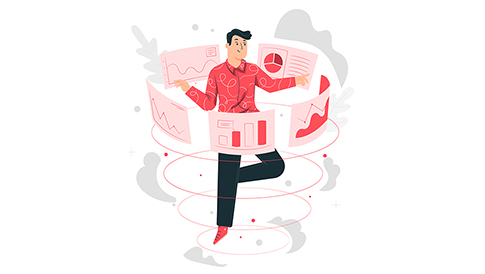There are endless ways to market your brand and business online today, and figuring out where your business fits into it can feel like a towering impossibility. Fortunately, to make things a little easier for you, we will look at ‘paid media’ and how it compares to organic traffic. Can’t decide where to start? Read on, and we’ll help you on your way.
What Is Paid Media?
Paid media refers to any content promoted through paid advertisements online, such as YouTube video ads, PPC ads on Google, sponsored social media ads, and website popups (to name a few). These types of ‘paid media’ campaigns can offer instant access to new leads, thus helping businesses increase their exposure and generate more revenue. But is paid media all that? How does it compare to earning leads organically?
Some Media Is Terrible
The average consumer encounters thousands of ads daily. Even scrolling through Facebook or Instagram, has you eye-balling an advert once in every three posts., Given the high frequency of ads we are exposed to, it is common to encounter very poor advertising daily. This is because anyone can pay to promote and push their posts on social media, and very few people—without expert assistance—are good enough to craft attention-grabbing ads on their own.
And, of course, when you are exposed to so many adverts that do not resonate with you, it is easy to fall prey to the line of thinking that paid media is not effective. It is. Paid media can be very powerful indeed…in the right hands.
How Effective Is It?
Again, paid media has the potential to be very effective indeed. Still, it takes significant time and attention to master – unless you outsource to the experts. In any case, let’s look at some quick paid media stats:
- On average, a paid media campaign can generate an ROI of up to 200%.
- 70-80% of users ignore sponsored search results. This stands as a testament to creating a world-class ad’s importance. It has to engage your ideal customer, and you need a highly targeted and well-refined message to cut through the noise.
- 58% of millennials report that they have indeed purchased a sponsored ad. It works if you get it right!
The numbers don’t lie: paid media can add immense value to your business. However, if you fail to put the time and effort into mastering your campaign, you’ll never be able to reach your full potential.
What Is Meant by Organic Traffic?
Unlike paid media, organic traffic is completely free. So, for example, when you type something into Google, you’ll have a few sponsored ads at the top of the page (paid media); and below that (at #1 and beyond), you’ll find the ‘organic’ search results. These organic results hold that position because they have earned it by being relevant, reputable, and well-suited to your search query.
Make no mistake, gaining high organic rankings is no simple task – nor is it “free.” Whether you choose to work on your SEO or hire professionals, a significant investment of time, resources, and/or money will be required. Any organic traffic earned remains constant (as long as you continually work on your SEO to maintain and improve your position). In contrast, visibility through paid media disappears instantly with your budget.
What Is the Difference Between Paid Media and Organic Traffic?
The easiest way to differentiate between paid media and organic traffic is:
- Paid media = temporary exposure whenever you need it.
- Organic traffic = permanent traffic, for free, for as long as you maintain your position.
Is Paid Media Better than Organic Traffic?
Saying that paid media is better than organic traffic (or vice versa) is like saying that a screwdriver is better than a hammer. Both are tools that perform best when utilized for the appropriate task. In truth, SEO is the most valuable of the two as you work on “owning your traffic” rather than paying for exposure. So, for example, if you never invest in SEO and only ever use paid advertising, you will fall from view almost entirely when you stop running ads.
Through organic traffic and building your SEO up, your online presence will grow significantly and remain visible far and wide whether you spend on paid media. If you had to choose between the two, organic traffic has the most long-term value. However, you don’t have to choose between the two, so you should work on both!
You should develop a comprehensive, long-term search engine optimization strategy for the best results. This can take many months to establish. However, once up and running with the help of an established digital marketing agency, you can enjoy a scalable and sustainable ROI. In the meantime, while establishing your SEO campaign, you can adopt paid media on Google and social media to gain instant traffic and visibility.
Following that, you can continue to adopt paid media across multiple platforms for various functions (e.g., pushing new products, introducing seasonal changes, and promoting high-value content).
Conclusion: Pair Paid Media and Organic Traffic like Steak and Wine
Ultimately, taking a “which is better” line of thinking in your digital marketing is not the right approach. Instead, you need to study and understand each digital marketing method available and how they can complement one another in your broader long-term strategy. Paid media has its place and can be incredibly valuable when executed well.
Organic traffic through SEO should be treated as the backbone of your marketing efforts; don’t neglect it. The good news is that many well-established digital marketing agencies offer paid media services on top of SEO, which means you can easily pair the two marketing mediums together, under one banner, like a juicy slab of steak and some fine wine.
